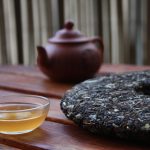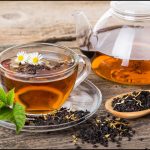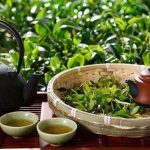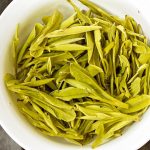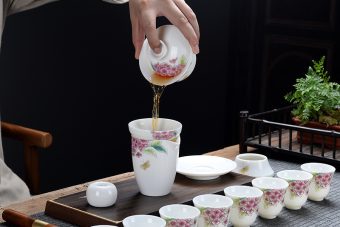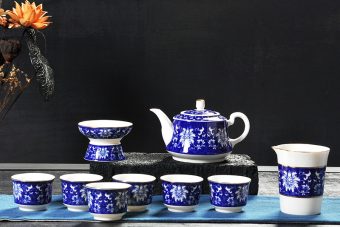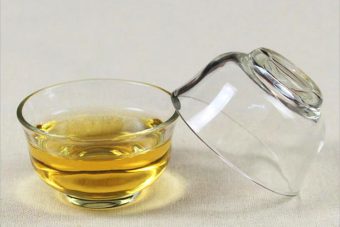Pu Erh tea is mainly produced in Xishuangbanna, Linyi and Puerh in Yunnan Province. Pu…

by vinux
- November 21, 2023
- 220
- 0
I. Understanding Tea Makers
A. The Role of Tea Makers in the Brewing Process
Tea makers play a pivotal role in the brewing process. They function as the bridge between the raw, dried tea leaves and the final aromatic cup that we savor. Their purpose is to effectively infuse the water with the tea essence while filtering out the leaves. This process is critical to ensuring that the resulting drink exhibits the right balance of bitterness, astringency, sweetness, and fragrance that every tea enthusiast appreciates.
B. Different Synonyms of “Tea Makers”
“Tea makers” is a broad term that encompasses a variety of synonyms depending on the culture, brewing process, and personal preference. These might include “teapots”, “tea-infuser”, “tea-strainer” or “tea-brewer”, each reflecting a different aspect of the tea brewing journey.
C. Variations of Tea Makers: Teapot, Tea Filter, and Tea Infuser
The variety of tea makers available reflects the complexity, artistry, and diversity inherent in tea culture itself. A traditional teapot is perhaps the simplest and most iconic example of a tea maker, offering an uncomplicated brewing process that’s perfect for almost any type of tea.
A tea filter enhances this process by providing a separate compartment for the tea leaves to steep, preventing them from being poured into your cup. This tea maker is ideal for those who prefer strong, intense brews as it permits longer infusion times without the risk of over-brewing.
Finally, a tea infuser is typically a small tool that holds tea leaves, allowing them to steep in hot water while keeping them confined. Infusers come in different shapes and sizes but are typically perforated or porous to allow the tea flavor to permeate the water. Their ingenious functionality and easy-to-clean design have made them a popular choice among modern tea drinkers.
II. The History and Functionality of Tea Infusers
A. The 19th-Century Origin of Tea Infusers
As a diving deep into the chronicles of the brewing industry, we recognize the molding of tea infusers as far back as the stunning era of the 19th Century. It’s during this period that the inventor’s ingenuity met the acceptability of the brewing industry, making the use of the tea infuser widespread. This phenomenal outset was motivated by an urge to adequately control the brewing process, thereby maximizing the taste and aroma, while minimizing the possible encounter with loose tea leaves during consumption. Hence, its invention can be associated with the premium vibe that the 19th Century introduced into history.
B. Purpose and Functionality of Tea Infusers in Brewing Tea
The sagacity of the tea infuser lies in its profound purpose and functionality which remain intrinsic in the brewing process. The essence of the tea infuser is to create a permissible environment for the tea leaves to unroll, expand, and release their full flavor in the process of brewing. Unlike the conventional methods of brewing, it provides a distinct taste experience by allowing the tea leaves to move freely in the water but also shielding your cup from the interruption of loose leaves. This beautiful marriage between the hot water and the tea leaves, facilitated by the tea infuser, accentuates the tea brewing process, making it an essential addenda in the world of brewing.
III. The Language of Tea Brewing
Behind every perfectly brewed cup of tea lies a mastery of terminologies and linguistic preciseness. There is a unique language in brewing tea. Proper vocabulary selection can make a significant difference in the process. It not only structures the way we prepare our cuppa but also shapes the experience.
A. The Correct Verbs to Use When Brewing Tea
When it comes to tea brewing, the words we use to describe our interactions with the tea leaves and the heated water matter. A common verb is ‘to steep’. This action refers to the soaking of the tea leaves in hot water within a specific time frame to extract its aroma, flavor, and color. Other than steeping, the verb ‘infuse’ is also apt, emphasizing the slow migration of the character of the tea leaves into the water through the use of a tea infuser. Hence, for tea lovers, ‘steeping’ and ‘infusing’ are more than mere actions; they are significant stages in the art of tea brewing.
B. The Role of Language in Differentiating Brewing Processes
Language not only describes the experience of brewing and consuming tea but also differentiates between various techniques and processes. For example, the term ‘brewing’ is generally employed to describe the process for both coffee and tea, but ‘steeping’ and ‘infusing’ are distinctively geared towards the delicate and nuanced practice of tea making. Understanding the unique language that revolves around tea brewing enriches not just the physical process of preparation, but also the sensual appreciation of tea. It provides a route to delve deeper into the history, tradition, and nuances of this beloved beverage.
IV. Exploring the Role of Tea Baristas
A tea barista is an integral part of the tea brewing and serving process. According to specialityteaeurope.com, a tea barista is a custodian of the tea experience whose role is not only to brew and serve tea but to narrate the tea’s journey—from leaf to cup—bringing the beverage to life.
A. Definition and Job Description of a Tea Barista
By definition, a tea barista is a professional who specializes in making, presenting, and serving beverages from tea leaves. They are uniquely knowledgeable about various types of tea leaves, brewing methods, and serving techniques. Their job includes preparing tea accurately according to customer requests, educating customers about different kinds of teas and brewing processes, and maintaining clean and organized work areas. Being a tea barista is an exciting and stimulating experience, requiring a real passion for not only the product (tea) but also the performance required to serve it perfectly.
B. The Skills and Knowledge Required for a Tea Barista
The job of a tea barista requires a specific skill set and significant knowledge. A keen sense of taste and smell is paramount to determine the quality of the tea. Proficiency in different brewing methods—understanding boiling points, steeping time, and water quality—is a must. Good communication skills are needed to interact with customers and colleagues effectively. Additionally, knowledge about the history and types of tea, from green and black to oolong and rooibos, is essential. Baristas also need to know how different factors, like origin, climate, and cultivation process, can affect the taste and quality of the tea.
C. How Tea Baristas Add Value to the Tea Brewing and Serving Process
Tea Baristas add considerable value to the overall tea experience. They serve as the bridge between the simple act of drinking tea and appreciating it as a nuanced, flavorful beverage. With their rich knowledge, they can suggest the correct type of tea based on a customer’s preference, ensuring an enriched tea experience. Through their skilled brewing methods, they unleash the adequate flavors of the tea, guaranteeing an optimal product in the cup. And finally, their ability to narrate a tea’s journey brings a story-telling element to each cup, making each sip a part of a larger, richer experience.
